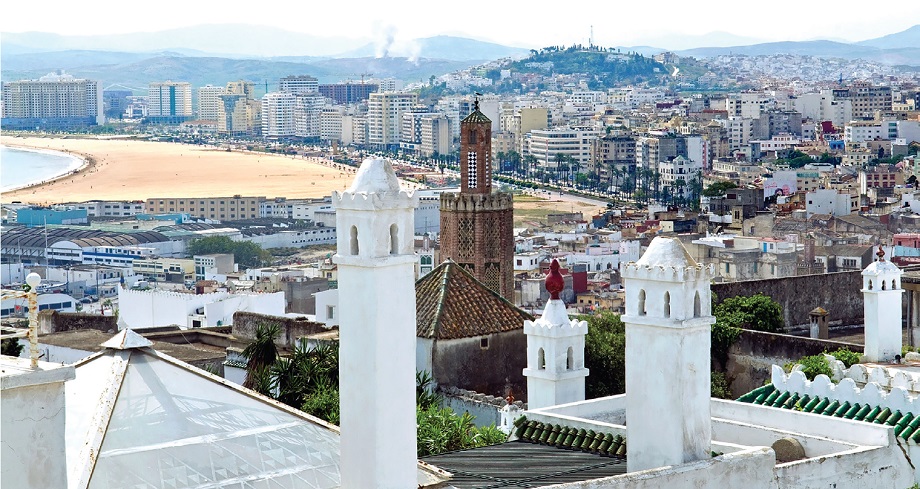Where cities can take Africa

Tangier in 2000 was a sleepy coastal city in the north of Morocco. Fifteen years later, Tangier’s population has exploded three-fold into a vibrant metropolitan area of 1.5 million inhabitants. The city’s free-zones have attracted new industries, such as automobile producers. A new business district called Tangier City Center and new satellite cities arise around Tangier’s old town, providing local inhabitants with modern infrastructure and amenities that have been sorely lacking. A new high-speed train is being built to connect people with the state-of-the-art Ibn Batouta International Airport.
Examples like these prove how urbanisation is transforming African societies profoundly. Africa is urbanising twice as fast as Europe did. The share of urban residents in the total population has increased from 14% in 1950 to 40% today. It took Europe 110 years to move from 15% urban in 1800, to 40% in 1910. Africa has achieved that same transformation in 60 years, nearly half the time. The continent is urbanising at a historically rapid pace coupled with an unprecedented demographic boom: the population living in cities has doubled from 1995 to 472 million in 2015. By 2050, about 56% of Africans are expected to live in cities.
Make no mistake about this: Africa’s cities and towns are engines of growth that, if harnessed correctly, can fuel the entire continent’s sustainable development. In fact, the African Economic Outlook 2016 concludes that Africa’s urbanisation holds immense potential for accelerating structural transformation that drives economic growth.
Cities, for example, increase the consumer base for African food producers. The urban sector accounts for 40% of the total population, 50% of total food consumption and 60% of the food market. The OECD’s Sahel and West Africa Club estimates that this has created a food economy worth US$180 billion in 2010, by far the region’s biggest private sector industry. Consider that two-thirds of the investment in urban infrastructure needed by 2050 has yet to be made to accommodate the growing urban population. This is a huge economic opportunity for domestic and foreign investors, which could create millions of jobs. Higher agricultural productivity, industrialisation, services stimulated by a growing middle class and foreign direct investment in urban corridors create real ways to generate economic growth. Stronger social development is also possible through safer and inclusive urban housing and robust social safety nets. Sound environmental management in urban centres will go a long way too towards addressing the effects of climate change, as well as the scarcity of water and other natural resources, controlling air pollution, developing clean cost-efficient public transportation systems, improving waste collection, and increasing access to energy. Indeed, the economic, social and environmental benefits of effective urbanisation cannot be underestimated.
Yet, realising the promise of cities requires cashing in on the urbanisation dividend through bold policy reforms and sound planning. Well-functioning cities don’t just happen; they are created to function well.
What this requires are tailored and more sustainable urbanisation strategies. These have to be designed and implemented to reflect specific contexts and diverse urban realities and patterns. Better matching formal real estate markets with housing demands by clarifying land rights is one necessary policy reform. Improving connectivity with rural areas as well as building infrastructure and expanding services within and between cities are other strategic components.
Today, however, less than a third of African countries have national urbanisation strategies. Well-functioning cities also need capable, transparent governance. Yet, local government jobs pay poorly and are not considered viable career options to attract Africa’s young talent. And sustainable urbanisation needs to tap into public and private sources of finance in innovative ways. Urban investment needs in sub-Saharan Africa alone are estimated between $12.5 billion and $35 billion per year depending on urban extension and population densities.
New and ambitious strategies for investing in sustainable urbanisation will top the global agenda as the international community gathers in Quito, Ecuador for the Habitat III Conference in October 2016. As the continent refines its Common African Position on urban development, reflecting Agenda 2063 and Sustainable Development Goal 11 on cities, Africans have much to contribute to this discussion. By understanding the challenges and optimising the opportunities of urbanisation, Africa’s cities are not only a model of lessons and best practices but also a blueprint for charting a future of inclusion, productivity and prosperity for the benefit of all Africans.
For more on Habitat III–United Nations Conference on Housing and Sustainable Urban Development, 17-20 October 2016, see https://habitat3.org
